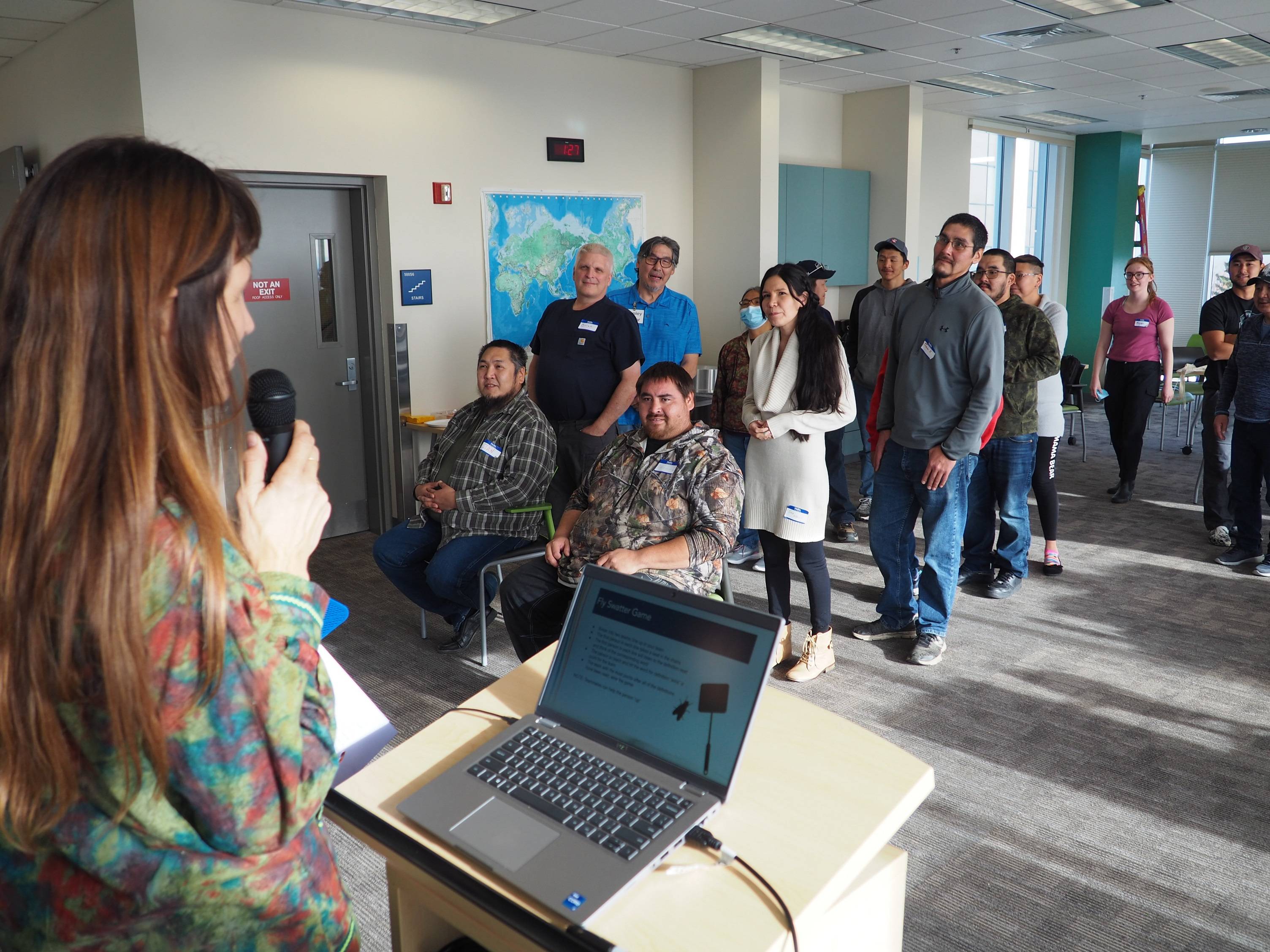Climate adaptation training brings tribal communities together
Molly Tankersley
Nov. 14, 2022
As severe weather increases across Alaska, climate adaptation in rural Alaska is a growing task for Alaska tribes. Earlier this month, a cohort representing twelve Alaska tribal communities across western and interior Alaska gathered at the International Arctic Research Center to attend a Tribal Climate Adaptation 101 training led by the Alaska Tribal Resilience Learning Network within the Alaska Climate Adaptation Science Center at the University of Alaska Fairbanks.
In the wake of Typhoon Merbok, the realities of extreme weather impacts and the compounding financial and environmental challenges many Tribes face were on the minds of presenters and participants alike. The three-day interactive workshop, led in partnership with the Native American Fish and Wildlife Society, aimed to support Tribal Climate Resilience Coordinators and Environmental Professionals in their climate change adaptation planning. Over three days, participants heard from climate scientists about how the climate is changing, learned about various approaches to climate adaptation, and were introduced to different adaptation strategies.

A cohort representing twelve Alaska tribal communities across western and interior Alaska gathered at the International Arctic Research Center to attend the Tribal Climate Adaptation 101 training.
From understanding and accessing the best available climate information to participating in interactive activities that emphasized the terms used in climate conversations and academic spaces, the training was designed to expand capacity for adaptation, and give participants a suite of tools, support, and knowledge that they could bring back to their communities. Community leaders learned about using online climate and weather tools and opportunities for community-led data collection with drones, finding and applying for grants, and centering personal and community health in our work.
Beyond the presentations and resources, one of the most valuable aspects of the training was the opportunity for tribes to hear from and support one another in their adaptation work. During the training, Jan Olson from the Native village of Hooper Bay noted, “We’ve been here for thousands of years and now we know we have to move. If you need to move or have ideas for moving we’re here and can talk about it.”
Jolene Nanouk, a tribal council member from Unalakleet who participated in the training said, “We’re living through this climate change and we’re adapting through this process of having to deal with storms, permafrost, and erosion. Attending the training helped us feel more connected with other folks: what they’re experiencing, what they’re doing to help their communities and what resources are available in situations where they need infrastructure rebuilt or support to apply for grants. That’s what I gained from this training.”
For Nanouk, the sessions that dealt with land issues and relocation were particularly valuable. “What would happen if we had to relocate? It’s always been on our minds with Newtok, Kivalina, Shaktoolik, but now with more climate impacts there are more villages that are talking about relocation because of climate change, erosion, and permafrost thaw. If they were to relocate, whose lands would these villages be relocated to? That hit a spot where I was like, oh my gosh,” said Nanouk. Following the training, Nanouk attended the Alaska Federation of Natives convention where she introduced a friendly amendment to a resolution from Utqiaġvik that was in support of prioritizing governmental mitigation for erosion and flooding in and around Alaska Native communities to include reference to the land that’s presently occupied by communities and the land these communities will relocate to.
The training brought together experts and participants from the UA community, including attendees from the College of Rural Development, presenters from the Alaska Center for Climate Assessment and Policy, and the International Arctic Research Center.
“I’m really thankful that UAF has allowed this opportunity for people to do this. With what we’re going through right now, it’s a way to support and work together to help each other through this process of tribal climate adaptation and get ideas from others,” said Nanouk.


